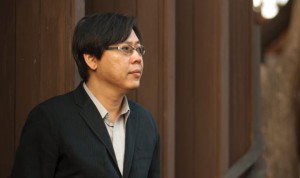SeMA Biennale, Mediacity Seoul 2014
Ghosts, Spies, and Grandmothers
September 2–November 23, 2014
Artistic Director: Park Chan-kyong
Venues:
Seoul Museum of Art (SeMA), Korean Film Archive
The idea here is not to promote Asia as a lifeless or fixed entity, but to see it as a moving target, a cognitive lens, a region that is much more complex than its stereotypes. Toward these ends, artists from Arab and Western countries will also participate in the exhibition. Mediacity Seoul 2014 will feature twelve new works, the largest number of new works to be presented in the history of the biennale. Participating artists include Haegue Yang, Bae Young-whan, Yuichiro Tamura, Otty Widasari, Nilbar Güreş, Truong Cong Tung, Sean Snyder and more.
Artistic Director, Park Chan-kyong, artist and film director, about the concept:
Mediacity Seoul 2014 invokes the word ghost to call upon those silenced spirits whose presence has been erased by dominant historical narratives; we want to hear them. We examine modern and contemporary history, with a focus on Asia, by calling these ghosts into our presence. Many of the participating artists address in their work the ambiguous attitude they or their contemporaries have toward the traditional practices and phenomena associated with ritual, mysticism, visions, awe, and the sublime. They capture in their work scenes of the modern and the traditional colliding and negotiating with each other. It is our hope that the ghosts that have been banished by science will come back to us through the reunion of media (technology) and medium (the spirit).
We use spy as a keyword for alluding to the experience of colonialism and the Cold War in Asia. Given that nationalism is on the rise again in East Asia, particularly in the aftermath of the Great Tōhoku Earthquake of 2011, we seek an opportunity to rethink the very notion of modernity and its brinkmanship course as represented by this potentially catastrophic radiation disaster. The immense amount of state violence experienced by East Asian and Southeast Asian countries in the 20th century brought about not only more wars but also intense mutual distrust and ideological witch-hunting; they still exert great influence in the region. Mediacity Seoul 2014 will show how the modus operandi of a media artist, who often has to interpret codes or deal with archiving and telecommunications, is similar to that of a spy. It will also show how an artist can completely reverse the meaning of spy.
In our everyday vocabulary, a grandmother is someone who is perhaps least associated with political power. In reality, grandmothers are living witnesses who have endured the ages of ghosts and spies. The ongoing controversy over the forced recruitment of comfort women during World War II illustrates, once again, that women bear the brunt of the harms of colonialism and war. On the other hand, in Korea grandmother is also associated with a traditional image in which she rises to pray every day at the dawn. In contemporary Korea, the potency of this traditional image has become diluted, as the image is considered antiquated and irrelevant. We want to rescue the grandmother’s ardent prayer from being buried under the easy projections of male-centered imagery and argue that the prayer of the grandmother symbolizes people’s prayers over the span of millennia.
Image: Park Chan-kyong. Courtesy of SeMa.


